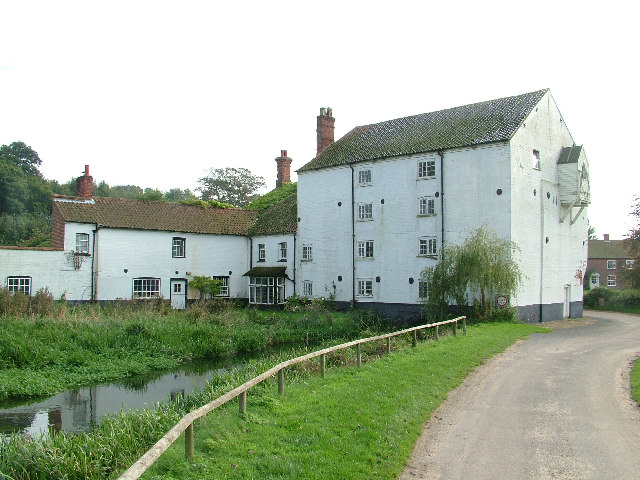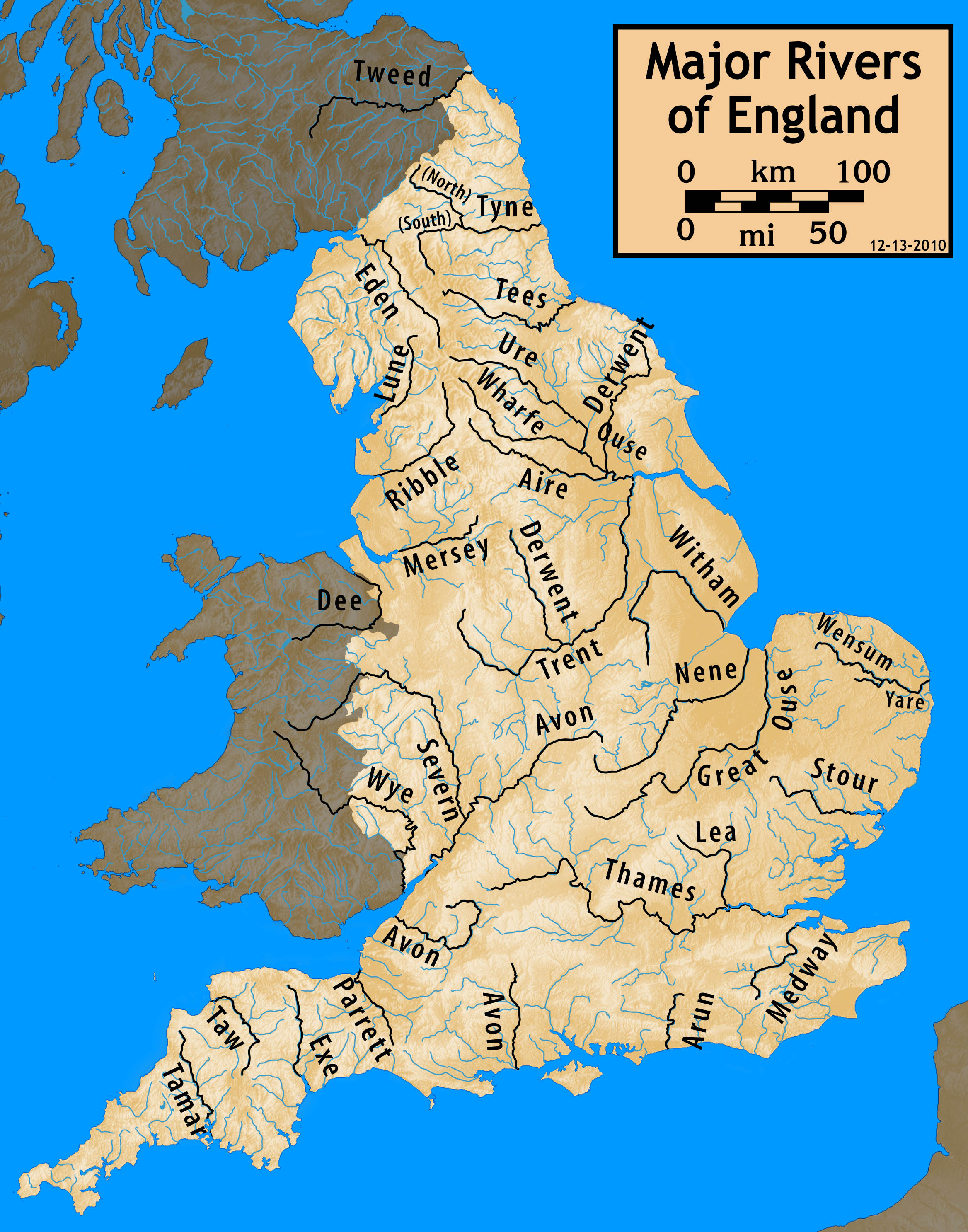|
River Ainse (or Eyn)
The River Ainse (or Eyn) is a small river in the county of Norfolk. It is a tributary of the River Wensum which it merges with at Lenwade. The River Ainse has several tributaries also. Eade's watermill The watermill located on the river at Great Witchingham is known as Eade's Mill. Eade’s Watermill, Norfolk Mills The mill was built in 1666. Until 1948 the waterwheel was still in working order. By 1972 the watermill was still being used as a to grind up pig meal and was powered by electricity. Today, the watermill and its surrounding buildings are listed. References See also * |
England
England is a country that is part of the United Kingdom. It shares land borders with Wales to its west and Scotland to its north. The Irish Sea lies northwest and the Celtic Sea to the southwest. It is separated from continental Europe by the North Sea to the east and the English Channel to the south. The country covers five-eighths of the island of Great Britain, which lies in the North Atlantic, and includes over 100 smaller islands, such as the Isles of Scilly and the Isle of Wight. The area now called England was first inhabited by modern humans during the Upper Paleolithic period, but takes its name from the Angles, a Germanic tribe deriving its name from the Anglia peninsula, who settled during the 5th and 6th centuries. England became a unified state in the 10th century and has had a significant cultural and legal impact on the wider world since the Age of Discovery, which began during the 15th century. The English language, the Anglican Church, and Eng ... [...More Info...] [...Related Items...] OR: [Wikipedia] [Google] [Baidu] |
Norfolk
Norfolk () is a ceremonial and non-metropolitan county in East Anglia in England. It borders Lincolnshire to the north-west, Cambridgeshire to the west and south-west, and Suffolk to the south. Its northern and eastern boundaries are the North Sea, with The Wash to the north-west. The county town is the city of Norwich. With an area of and a population of 859,400, Norfolk is a largely rural county with a population density of 401 per square mile (155 per km2). Of the county's population, 40% live in four major built up areas: Norwich (213,000), Great Yarmouth (63,000), King's Lynn (46,000) and Thetford (25,000). The Broads is a network of rivers and lakes in the east of the county, extending south into Suffolk. The area is protected by the Broads Authority and has similar status to a national park. History The area that was to become Norfolk was settled in pre-Roman times, (there were Palaeolithic settlers as early as 950,000 years ago) with camps along the higher land ... [...More Info...] [...Related Items...] OR: [Wikipedia] [Google] [Baidu] |
East Of England
The East of England is one of the nine official regions of England. This region was created in 1994 and was adopted for statistics purposes from 1999. It includes the ceremonial counties of Bedfordshire, Cambridgeshire, Essex, Hertfordshire, Norfolk and Suffolk. Essex has the highest population in the region. The population of the East of England region in 2018 was 6.24 million. Bedford, Luton, Basildon, Peterborough, Southend-on-Sea, Norwich, Ipswich, Colchester, Chelmsford and Cambridge are the region's most populous settlements. The southern part of the region lies in the London commuter belt. Geography The East of England region has the lowest elevation range in the UK. Twenty percent of the region is below mean sea level, most of this in North Cambridgeshire, Norfolk and on the Essex Coast. Most of the remaining area is of low elevation, with extensive glacial deposits. The Fens, a large area of reclaimed marshland, are mostly in North Cambridgeshire. The Fens ... [...More Info...] [...Related Items...] OR: [Wikipedia] [Google] [Baidu] |
Broadland
Broadland is a local government district in Norfolk, England, named after the Norfolk Broads. The population of the local authority district taken at the 2011 Census was 124,646. Its council is based in Thorpe St Andrew. In 2013, Broadland was announced as the most peaceful locality within the United Kingdom, having the lowest level of violent crime in the country. History The district was formed on 1 April 1974 by the merger of St Faith's and Aylsham Rural District and part of Blofield and Flegg Rural District. Politics The council is currently under Conservative control, as it has been for the majority of its existence, with the exception of two periods of no overall control. The council consists of 47 councillors, elected from 27 wards. After the most recent full council elections held on 2 May 2019, the composition of the council is as follows: ;UK Youth Parliament Although the UK Youth Parliament is an apolitical organisation, the elections are run in a way s ... [...More Info...] [...Related Items...] OR: [Wikipedia] [Google] [Baidu] |
Heydon, Norfolk
Heydon is a village and civil parish in Norfolk, England. It is located north of the market town of Reepham. The village can be accessed by the public only from the south, resulting in the only road, called The Street, effectively being a cul-de-sac for general traffic. At its centre is a green, surrounded by the parish church and traditional English rural buildings. The village is privately owned, by the Bulwer family. History Medieval The village is not referred to in the Domesday Book of 1086, and it is considered that it was at that time part of the manor of Stinton, a settlement long since depopulated, located in the neighbouring parish of Salle. The name is believed to derive from "higdown or similarly "plain on the hill". It is written in 1196 as Heidon.''Heydon Conservation Area Character Statement'' (March 2009) Broadland District Council A market charter was granted in 1311. The 14th/15th century Church of St Peter and St Paul is a grade I listed building and co ... [...More Info...] [...Related Items...] OR: [Wikipedia] [Google] [Baidu] |
River Wensum
The River Wensum is a chalk river in Norfolk, England and a tributary of the River Yare, despite being the larger of the two rivers. The river is a biological Site of Special Scientific Interest and Special Area of Conservation. The Wensum is the principal river on which the city of Norwich was founded. The river passes Carrow Road, the home of Norwich City F.C.; one end of the ground was originally named ''The River End'' in its honour, a name that still persists among fans. Etymology The river receives its name from the Old English adjective ''wandsum'' or ''wendsum'', meaning "winding". Course Modern Ordnance Survey Maps list the source of the Wensum as lying between the villages of Colkirk and Whissonsett in northwest Norfolk. The reasoning behind this claim is unknown given that other tributaries are further from the mouth; pre-modern maps and other written sources refer to the source to be in West Rudham from springs arising on the aptly named Wensum Farm. ... [...More Info...] [...Related Items...] OR: [Wikipedia] [Google] [Baidu] |
Lenwade
Lenwade is a village in the civil parish of Great Witchingham, Norfolk, situated in the Wensum Valley adjacent to the A1067 road south-east of Fakenham and some north-west of Norwich. The River Ainse (or Eyn) joins the Wensum at Lenwade. In 2001 it had a population of 464. Etymology The name may mean 'ford of the slowly moving river'. The first element possibly means ''lane'' in the Scottish dialect sense of 'scarcely moving river'. The second element of the name is the Old English ''gewæd'' ( ford). Industry and the local economy Much of the surrounding land is given over to agriculture. However, due to its geographical location Lenwade became the centre of the sand and gravel extraction and the manufacturing of concrete products in the Wensum valley during the middle to late 20th century. The legacy of this activity can be seen in the many flooded gravel pits in the area. Today, these now mature lakes are popular with anglers, naturalists and bird watchers. Indu ... [...More Info...] [...Related Items...] OR: [Wikipedia] [Google] [Baidu] |
Great Witchingham
Great Witchingham is a village and civil parish in the English county of Norfolk about north-west of Norwich. It covers an area of and had a population of 564 in 235 households at the 2001 census, including Lenwade but reducing to a population of 496 in 219 households at the 2011 Census. For the purposes of local government, it falls within the district of Broadland. Great Witchingham parish contains the hamlet of Lenwade. The parish church of St Mary is a Grade I listed building dating from the 14th century. The Norfolk Wildlife Centre and Country Park, a local attraction also known as the Animal Ark, is in Fakenham Road. Old Witchingham Hall, built in the 16th century, was demolished in the 1980s. It was once the home of John Norris (1734–77), High Sheriff of Norfolk for 1766. The village is also home to Great Witchingham Cricket Club, who play in the East Anglian Premier League. Great Witchingham Hall Great Witchingham Hall is a Grade II* listed country house buil ... [...More Info...] [...Related Items...] OR: [Wikipedia] [Google] [Baidu] |
Hammer Mill
A hammer mill, hammer forge or hammer works was a workshop in the pre- industrial era that was typically used to manufacture semi-finished, wrought iron products or, sometimes, finished agricultural or mining tools, or military weapons. The feature that gave its name to these workshops was the water-driven trip hammer, or set of hammers, used in the process. The shaft, or 'helve', of the hammer was pivoted in the middle and the hammer head was lifted by the action of cams set on a rotating camshaft that periodically depressed the end of the shaft. As it rose and fell, the head of the hammer described an arc. The face of the hammer was made of iron for durability. Hammer mills These mills, which were original driven by water wheels, but later also by steam power, became increasingly common as tools became heavier over time and therefore more difficult to manufacture by hand. The hammer mills smelted iron ore using charcoal in so-called bloomeries (Georgius Agricola 1556, ... [...More Info...] [...Related Items...] OR: [Wikipedia] [Google] [Baidu] |
List Of Rivers Of England
This is a list of rivers of England, organised geographically and taken anti-clockwise around the English coast where the various rivers discharge into the surrounding seas, from the Solway Firth on the Scottish border to the Welsh Dee on the Welsh border, and again from the Wye on the Welsh border anti-clockwise to the Tweed on the Scottish border. Tributaries are listed down the page in an upstream direction, i.e. the first tributary listed is closest to the sea, and tributaries of tributaries are treated similarly. Thus, in the first catchment below, the River Sark is the lowermost tributary of the Border Esk and the Hether Burn is the lowermost tributary of the River Lyne. The main stem (or principal) river of a catchment is labelled as (MS), left-bank tributaries are indicated by (L), right-bank tributaries by (R). Note that in general usage, the 'left (or right) bank of a river' refers to the left (or right) hand bank, as seen when looking downstream. Where a named river de ... [...More Info...] [...Related Items...] OR: [Wikipedia] [Google] [Baidu] |



_optimized_and_spun.jpg)

